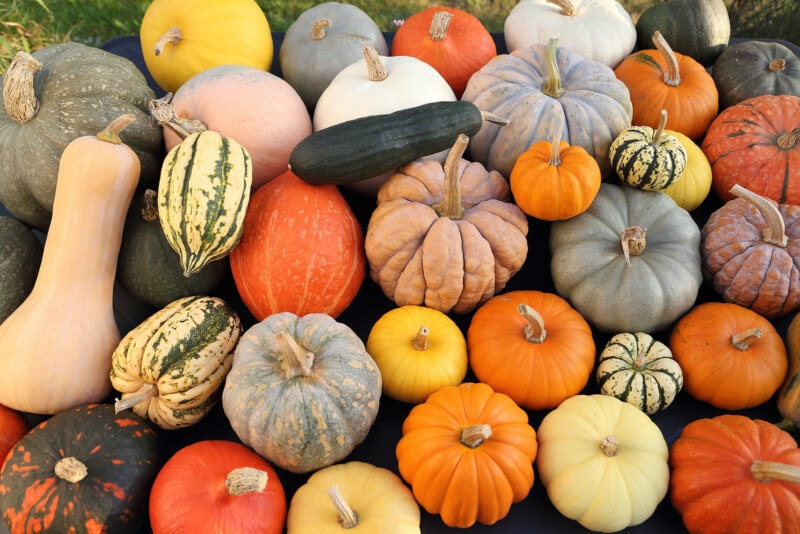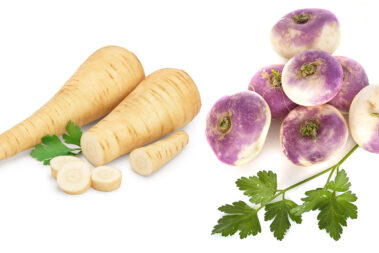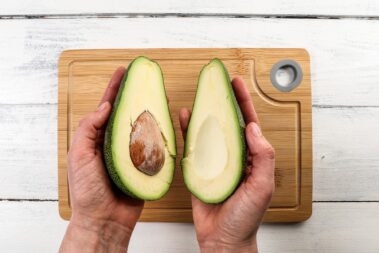If your experience with squash is limited to zucchini and butternut, it’s time to broaden your horizons. Below, I have 35 different varieties of squash, including winter squash, summer squash, and one variety that blurs the line between the two.
All are absolutely delightful and worth learning more about whether they are crawling up your garden fence or adding some brilliant depth to your meal.
Table of Contents
Types of Summer Squash Varieties
Cousa
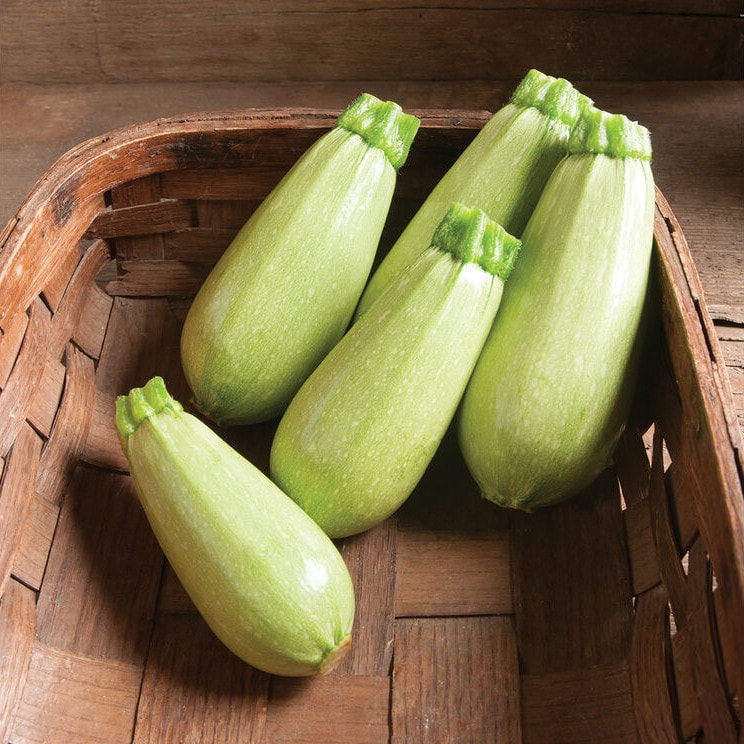
Cousa squash are very similar to zucchini but have a more bulbous bud end and are light green with striations. These tender squashes have a sweet flavor and very thin skin. They are popular in Syrian and Lebanese cuisine.
Crookneck
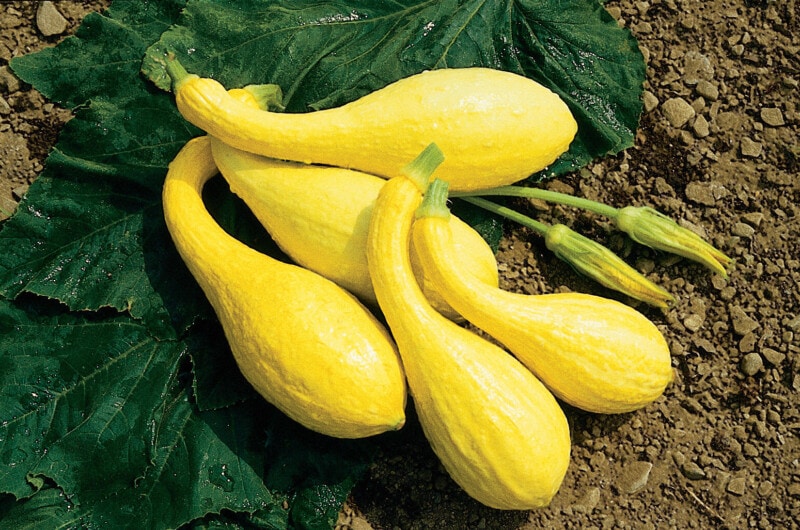
Crookneck squash is a variety of yellow summer squash that has an easily recognizable curved neck. The tender skin can be smooth or bumpy and the velvety flesh has a mild flavor similar to zucchini and other yellow squash types. Crooknecks can be used in a variety of recipes from soups to pastas, or sliced up and grilled with oil and spices.
Cuarzo

Cuarzo squash is a light green, somewhat grayish zucchini variety that has a high disease tolerance. These rare summer squashes can be used in place of traditional zucchinis in any recipe. They’re also a great choice for growing in the garden thanks to their long production window.
Eight Ball
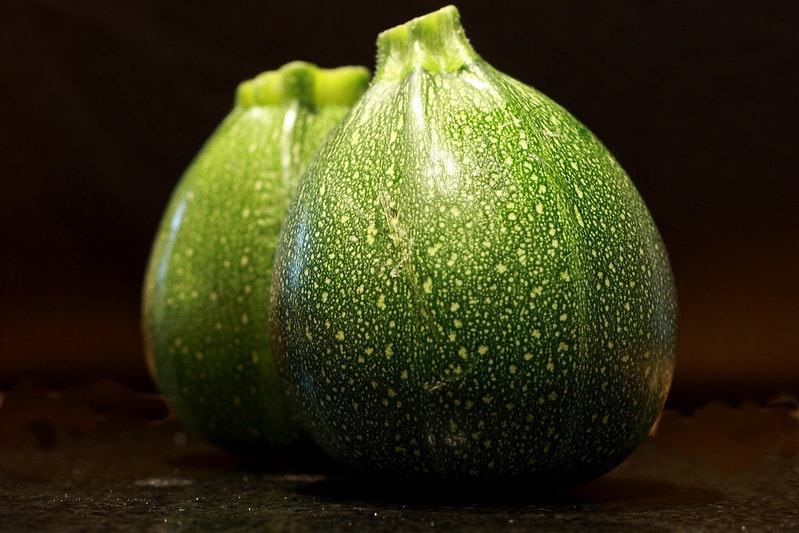
This summer squash hybrid is nearly perfectly round and about the size of—you guessed it—a pool ball. The smaller the squash, the sweeter the white, tender flesh inside. These delightful little balls are perfect for stuffing and baking.
Fortune
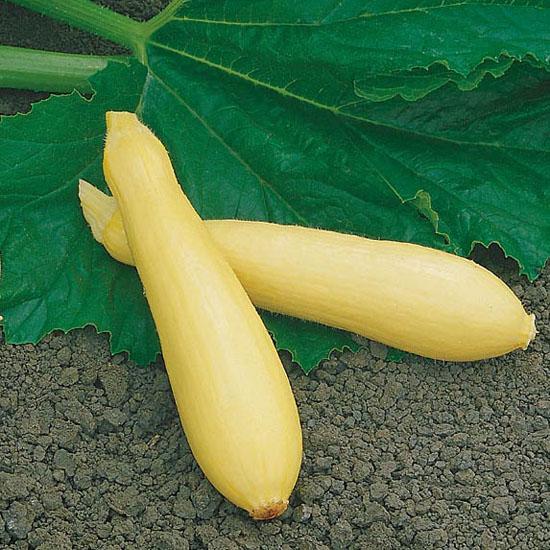
Fortune squash is a variety of yellow squash that matures early and typically has pale-yellow, butter-colored skin. In the kitchen, this variety is almost identical to straightneck squash, but in the garden, it’s impressively hardy, productive, and easy to grow.
Green Eggs
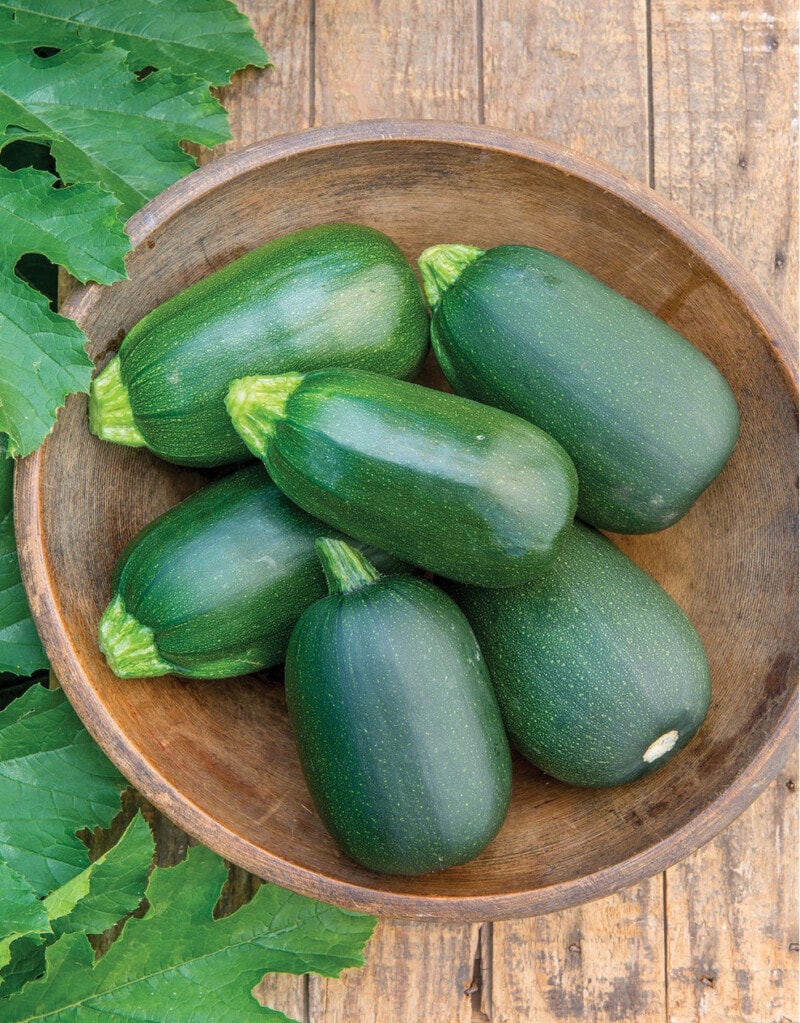
Like short, fat zucchini, the green eggs hybrid squash gives you the versatile flavor of zucchini in a sliceable, grillable shape that’s perfect for summer dining. This variety has deep green skin and grows on bushy vines that are less spiny than your typical squash plant.
Gold Rush

This zucchini variety has deep yellow skin with a waxy sheen. Unlike yellow summer squash, gold rush squash has a dark green stem like your typical zucchini. They have white flesh with a mild flavor that’s great for eating raw, steaming, or grilling up.
Chayote
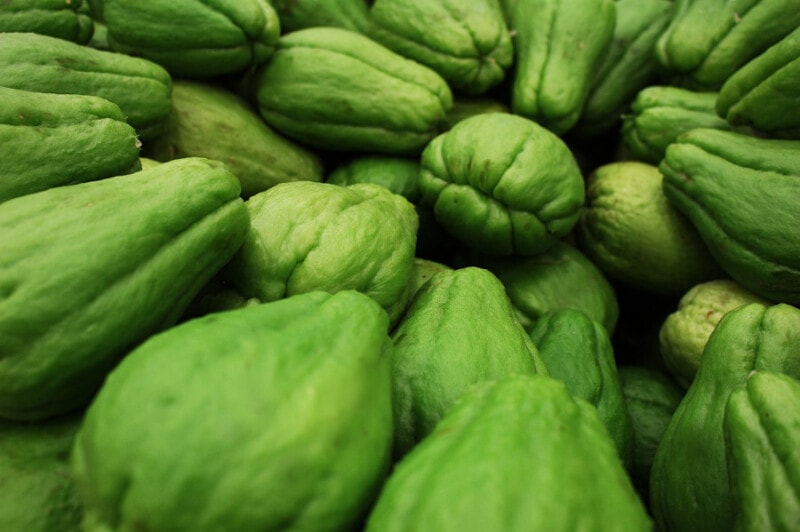
One of the most genetically distinct squashes is the chayote, or mirliton, an ancient squash species cultivated by Mesoamericans. It’s more closely related to gourds than to any true squash but has edible flesh that qualifies it as a squash. The flesh is quite hard but tastes very similar to traditional summer squash when cooked.
Patty Pan

Patty pan squash is a summer squash variety with a unique, flattened shape and scalloped edges. It’s named for the scalloped mold used to create specialty patty cakes. These adorable little squashes come in white, green, and yellow and have a slightly sweet flavor, especially when picked very young.
Papaya Pear
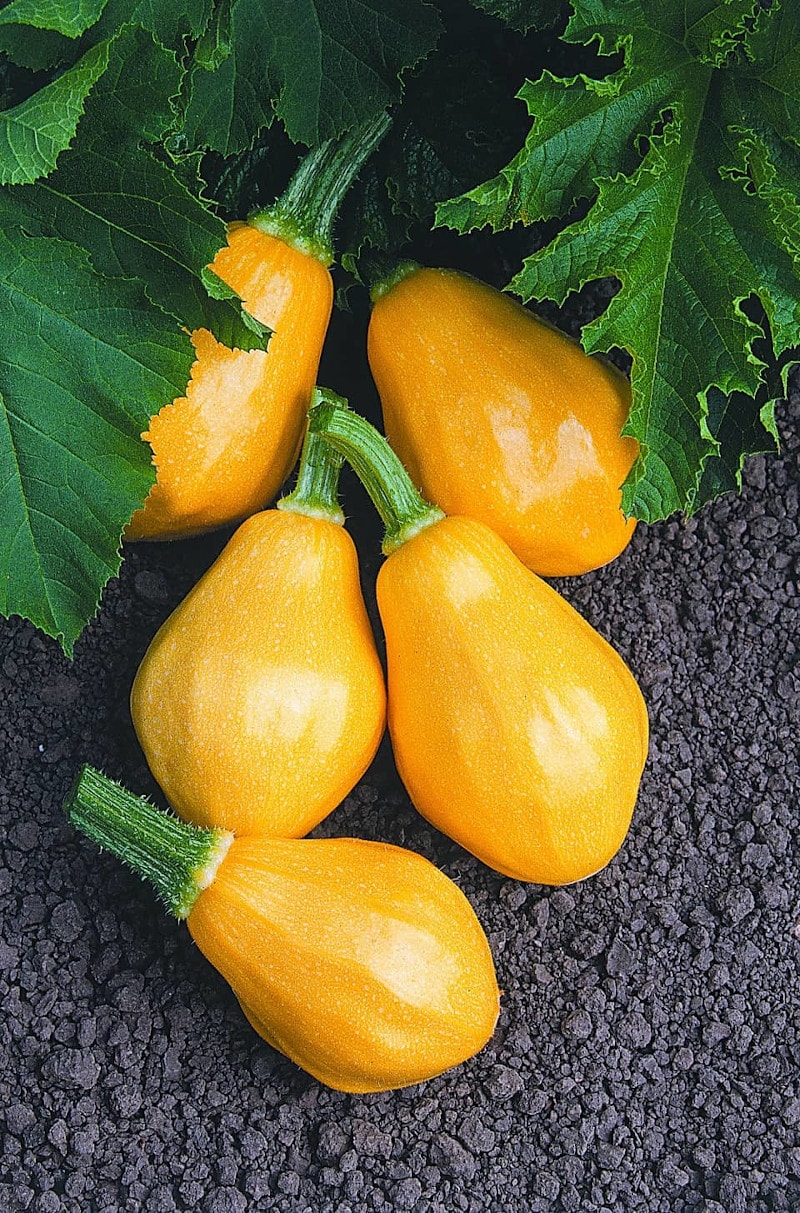
As the name suggests, this little summer squash has a shape reminiscent of a tropical papaya or a pear. Its skin is bright yellow, sometimes with green speckles. It has a slightly sweet taste similar to your typical summer squash and is the perfect shape for slicing up and grilling or eating raw on sandwiches.
Straightneck

The most popular variety of yellow summer squash, straightneck squash is very similar to crookneck, but with a more upright posture. The skin of this type of squash is usually smooth and can be solid yellow or striped with cream. In any case, it’s a staple of American cooking and is used in soups, stir-fries, pasta, kabobs, and just about any other dish that would benefit from a tender, mildly sweet, fleshy vegetable.
Tatume
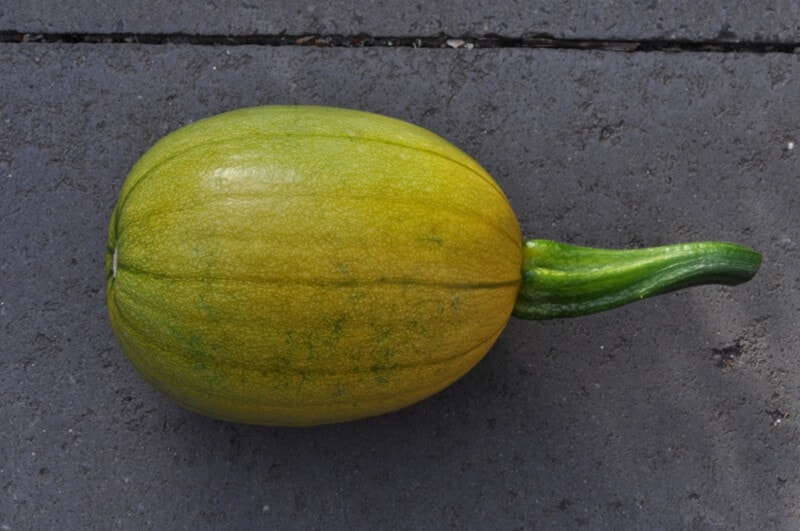
Tatume squash is unique because it can be harvested in its immature form as summer squash or its fully grown form as winter squash. They grow more like a winter squash and are notorious for taking over gardens. Immature forms are about the size of a baseball, light green, and have more flavor and denser flesh than yellow squash. Mature tatume is about the size of a soccer ball, is dark green or green-gold, like an immature field pumpkin, and is perfect for baking.
Tromboncino

Tromboncino is a squash variety that looks like it was dreamed up by Dr. Seuss. This elongated, curvy Italian heirloom is similar to green zucchini in flavor and in how it is used. It’s typically harvested around 10 inches in length. If left to mature on the vine, it can reach lengths of 3 feet and get quite twisted up. Mature forms will stay good for long periods like a winter squash and have a nutty, pumpkiny flavor.
Zucchini

One of the most well-known summer squash, zucchini is a popular ingredient in many dishes, from stir fry to spaghetti. This long, green squash has a mild flavor and tender flesh. In other countries, zucchini is known by many names, including courgette and baby marrow.
Zephyr
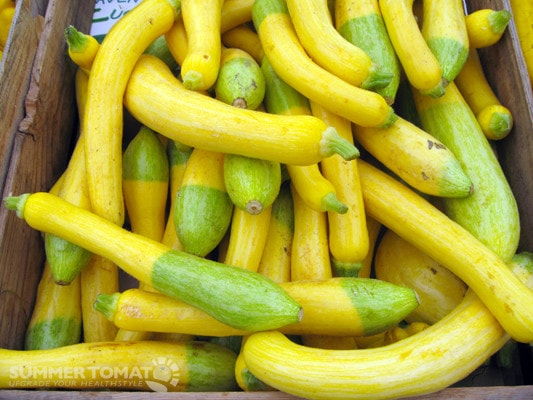
The beautiful two-tone zephyr squash has a strange lineage. It’s a hybrid between a crookneck squash and an acorn, delicata hybrid. Despite having some winter squash in the family tree, this tender squash is all summer. It’s slightly sweet, somewhat nutty, and finishes with a unique grassy aftertaste.
Types of Winter Squash Varieties
Acorn
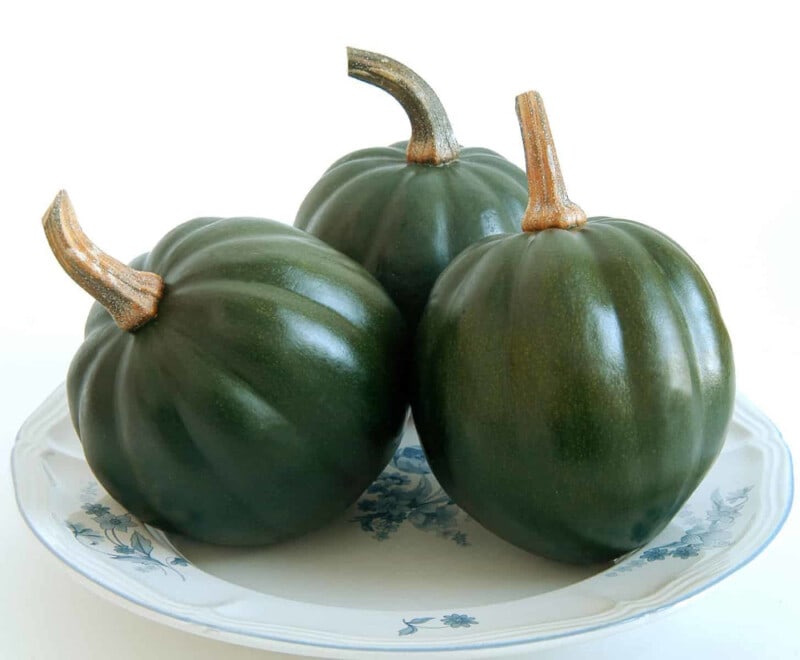
Acorn squash is named for its acorn-like shape but is more easily recognized by the thick longitudinal ridges running down its surface. These squash have deep green skin and yellow-orange flesh. They’re delicious when baked but can also be used in soups or scraped out and steamed. These cute little winter squashes are packed with antioxidants and fiber (1).
Bonbon
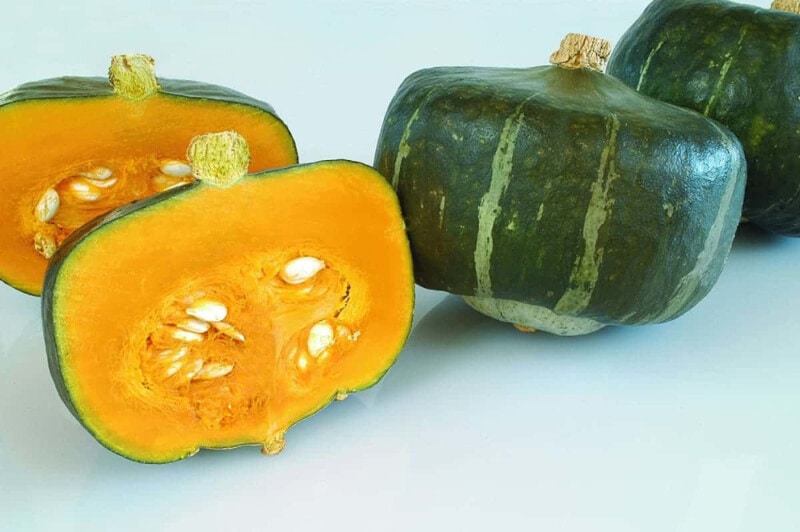
Bonbon squash is a specialized squash variety very similar to buttercup squash, but with even sweeter flesh, hence the name. But the real difference is in how compact the bonbon plant is and how quickly it sets fruit.
Buttercup

Buttercup squashes have a similar shape to acorn squash but lack the distinctive ridges. They are dark green with pale green strips and have yellow-orange flesh. These unique winter squashes have a sweeter flavor than is typical and a delicious creamy texture that makes them perfect for baking.
Butternut
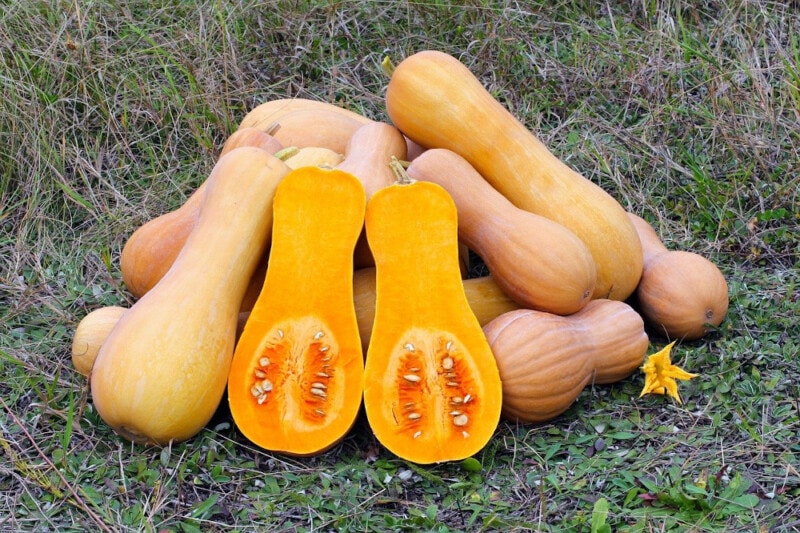
One of the more popular winter squashes, butternut squash is a favorite for making soups, baking, and steaming. These pinkish-orange squash have an elongated shape with two bulbous ends, one that is flesh-filled and one with seeds in the middle. They have a pumpkiny, nutty flavor and are loaded with vitamins and minerals(2).
Carnival

Carnival squash is a hybrid between the popular acorn squash and the smaller sweet dumpling squash. This type of squash has the same festive orange, green, and cream patterning as the dumpling but in a larger package. The flesh is orange with a sweet maple syrup flavor.
Carving Pumpkins
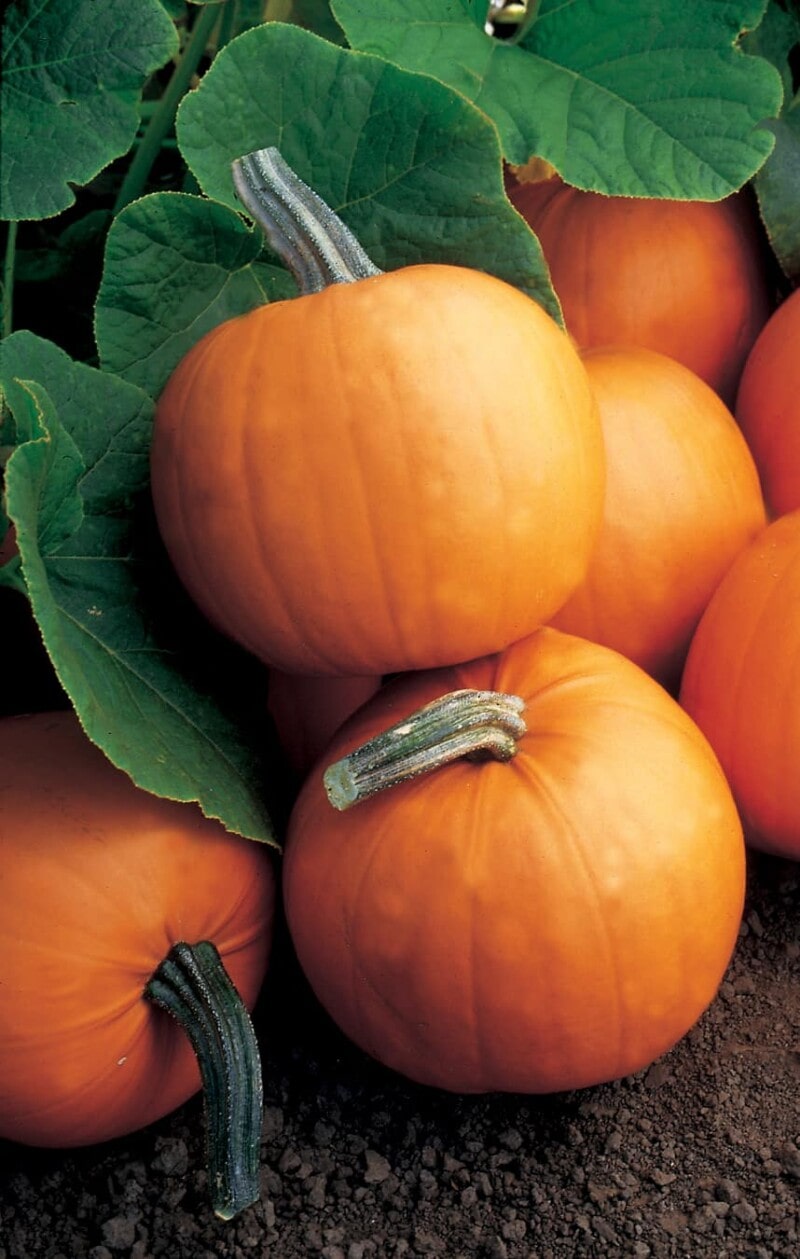
Carving pumpkins, also called field pumpkins, differ from sugar pumpkins in the sugar content and texture of the flesh. These stringy-fleshed pumpkins also tend to grow larger and have thinner skin, which makes them better for carving. There are hundreds of varieties of carving pumpkins that span two different cucurbit species. Ever wondered if pumpkin is a fruit or a vegetable? The answer might surprise you.
Cheese Pumpkin
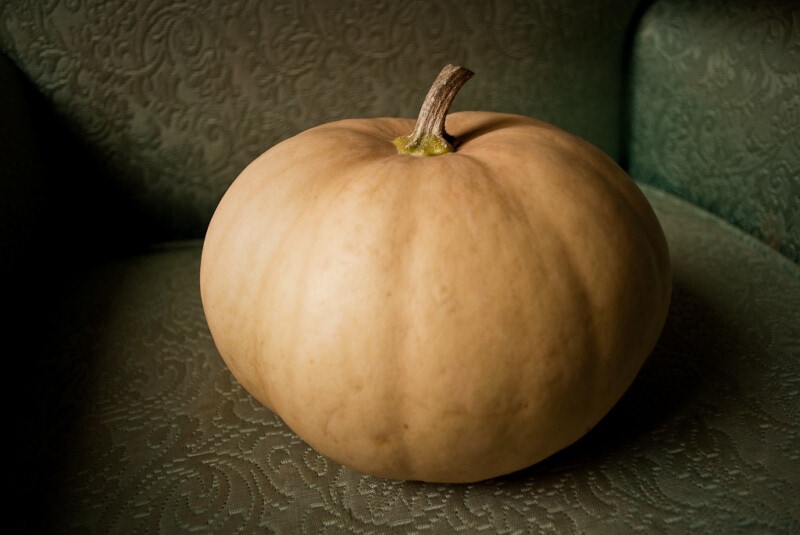
The cheese pumpkin is a specialty variety of pumpkin most closely related to the butternut squash. This pale, pinkish pumpkin is an heirloom variety first cultivated on Long Island in the 1860s. Like sugar pumpkins, this squash variety is perfect for baking, making into pies, and steaming.
Delicata
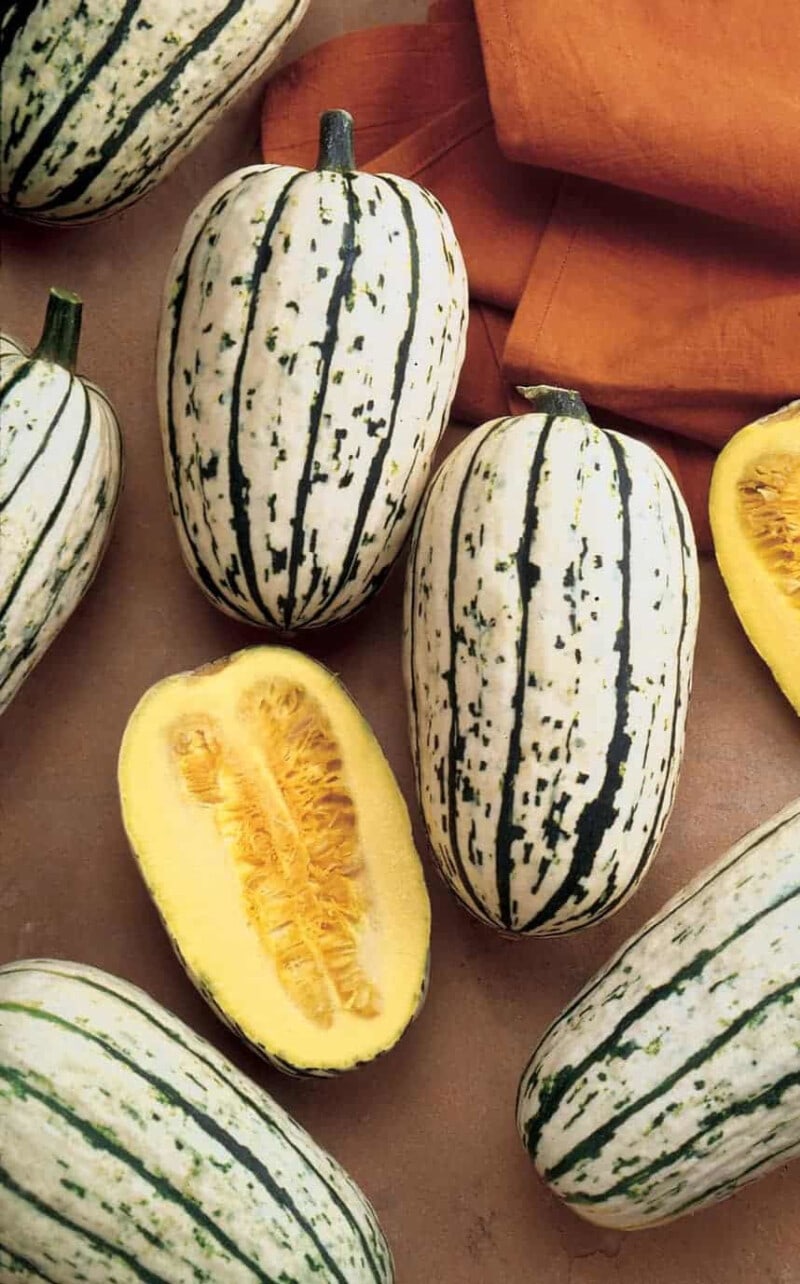
One of my favorite winter squashes is delicata squash. This undersized cucurbit has colorful yellow-white skin with green stripes. Delicata squash’s rind is thinner than most winter squash and is edible after baking. The flesh is exceptionally flavorful and sweet—something between pumpkin pie and sweet corn—and has earned this squash the nickname “sweet potato squash.”
Honey Bear

Honey bear is an ultra-sweet variety of acorn squash bred to be cut in half, baked, and served as a half shell. Even the size is perfect for this use, with each half making up the perfect serving amount for a tasty side dish. For the gardeners out there, this variety is also easier to grow, because the plants are very dense, have a high yield, and are tolerant to powdery mildew.
Honeynut
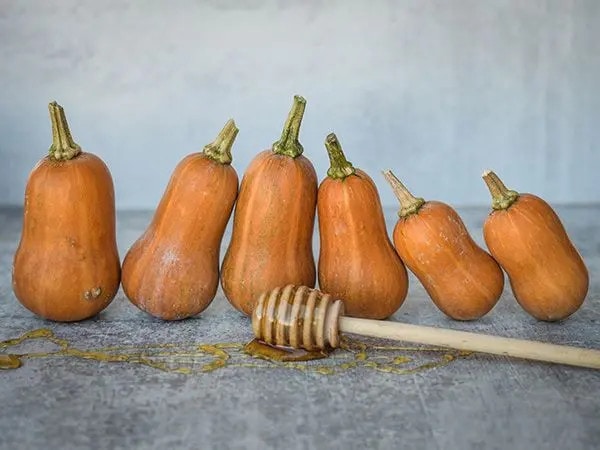
Honeynut squash looks like miniature butternuts but has an even sweeter taste. The flesh is deep orange and bursting with vitamins and minerals. These little squashes are great for baking and the perfect size for serving whole.
Hubbard
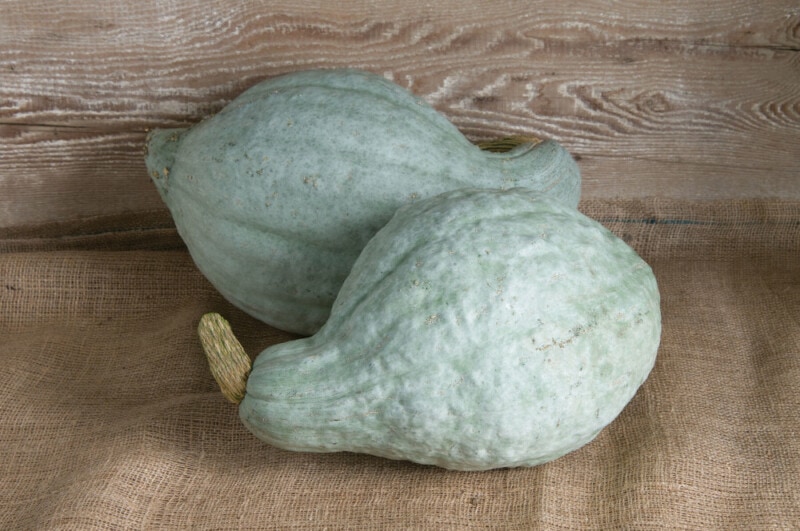
Hubbard squash is large, bumpy, and plump and looks like it came out of some sort of Tim Burton fairy tale. They are typically pale blue in color but can also be found in pale orange and green varieties. Despite the ugly outside, these squashes are quite striking on the inside, with bright orange flesh that is sweet and tastes like a mix of pumpkin and sweet potatoes.
Kabocha

Also known as Japanese squash or Japanese pumpkin, kabocha squash is a staple of Japanese cuisine and can often be found fried in tempura batter. It’s a shame these delicious squash aren’t more popular stateside, because they have a wonderful velvety texture and sweet taste. They look very similar to buttercup squash on the inside and out.
Pink Banana Jumbo

The pink banana jumbo squash is the largest of the non-pumpkin squash varieties. These beasts can easily grow to over 50 pounds, which translates to a heck of a lot of squash soup to get you through the winter. They have pale pink to pinkish-orange skin and are loaded with tender flesh similar to a butternut or acorn squash in taste.
Red Kuri
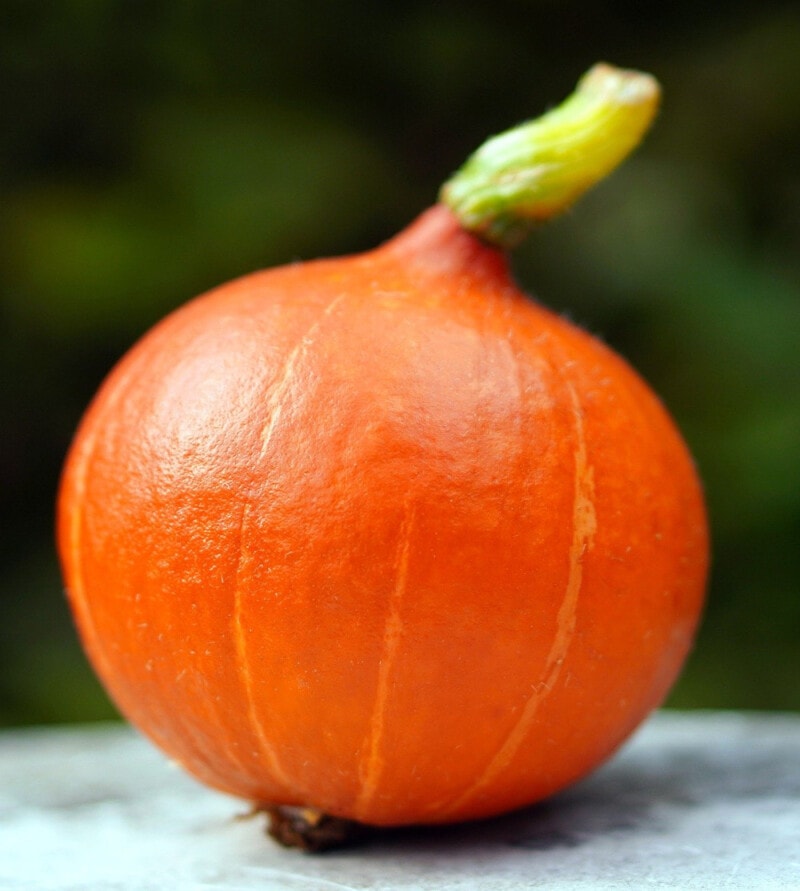
This rounded winter squash has a distinct pointed top and reddish-orange skin with bright orange flesh on the inside. This versatile squash tastes like chestnut and is perfect in sweet desserts, muffins, or when prepared with savory meals.
Spaghetti
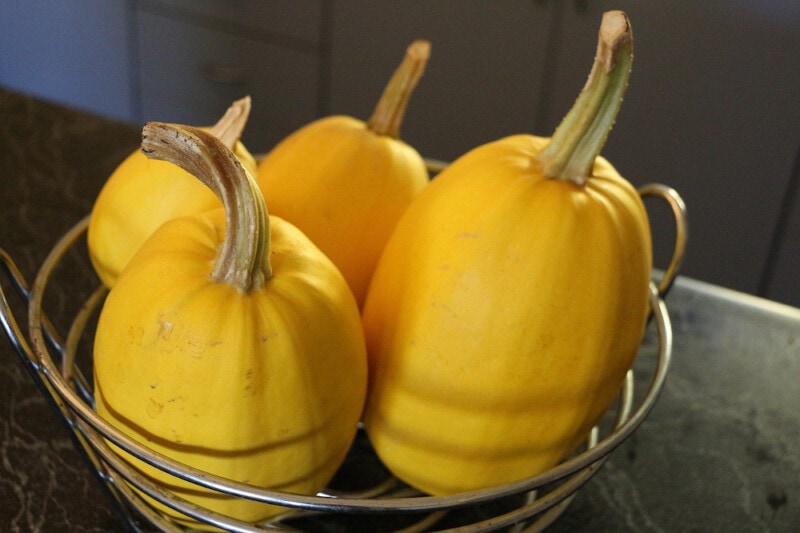
Another very popular winter squash, spaghetti squash is prized for its fibrous, spaghetti-like flesh. These large, oblong cucurbits can be steamed and eaten as a delicious side with some salt and pepper, or used as a low-carb pasta substitute. The rind of spaghetti squash can be ivory, yellow, or orange, with the deeper colored varieties having the most beta carotene.
Sugar Pumpkin
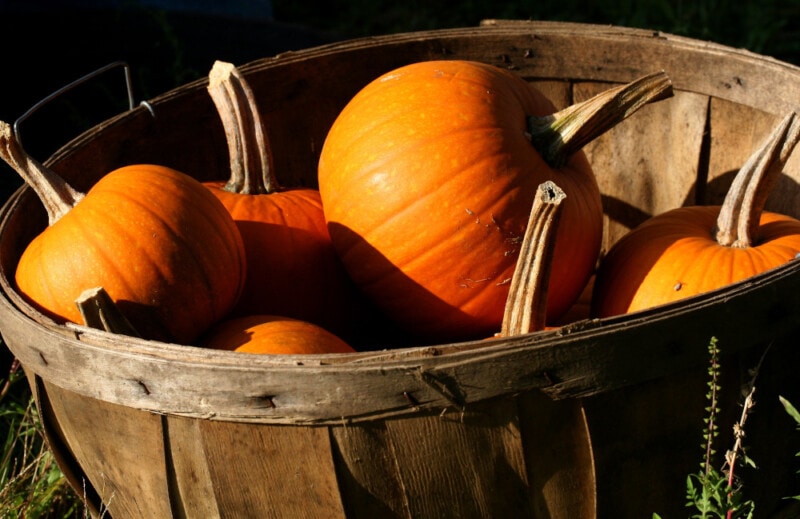
Also known as pie pumpkins and sweet pumpkins, sugar pumpkins are the variety of pumpkins most commonly used to make pies. They are great when baked or steamed and their sweet flesh works just as well with dessert spices (like in a fruit dip) as it does with savory ones, like this Creamy Pumpkin Soup.
Sunshine Kabocha
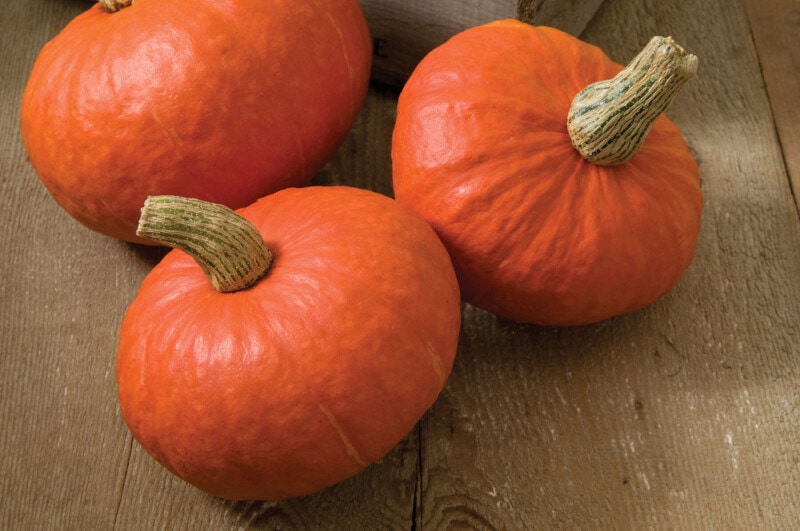
This kabocha variety has a distinct pink-orange rind and a round shape. The flesh is bright orange, sweet, and perfect for baking, mashing, and making into pies.
Sweet Dumpling

Sweet dumpling is a variety of acorn squash that produces undersized ribbed fruit. About half the size of its more popular cousin, these little acorns are perfect for slicing up and baking. They have very sweet, tender orange flesh and showy yellow, cream, and green skin.
Turban
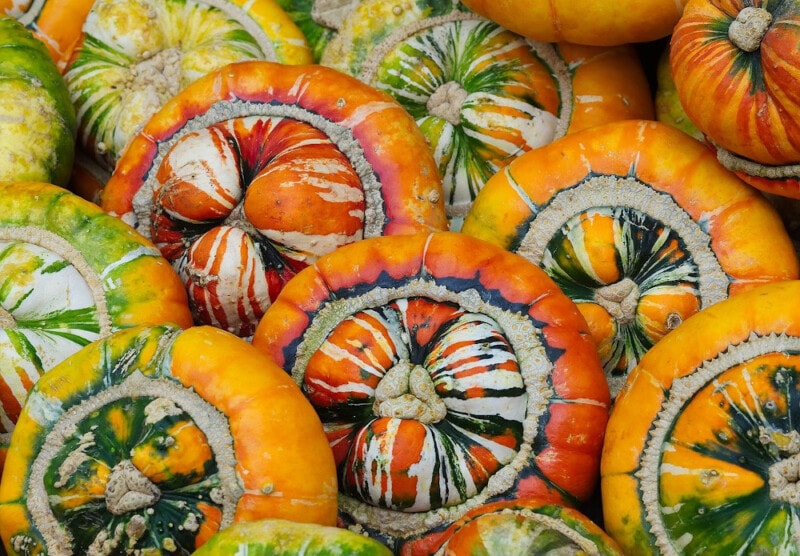
Turban squash is brilliantly colored and, thanks to a strange double-growth pattern, somewhat resembles a turban. They have a dry texture and nutty, sweet flavor. They are great in soups, curries, or baked with some oil and spices. They also make fantastic Thanksgiving decorations.
Yokohama

We hate to throw around the word ugly, so let’s just say the Yokohama squash is unique. This pumpkin-shaped cucurbit has greyish skin with ridges and bumps. It was named for the Yokohama port—one of the first Japanese ports open to US travelers. Despite its strange looks, this squash tastes very familiar on the inside and is used in all the same ways as your typical winter squash.
What Qualifies as a Squash?
There are a number of species in the Cucurbita genus, but only five of them produce edible, fleshy fruit. These are what are considered squash.
Gourds, which are produced by several species within the genus, are not squash because they have no edible flesh. Instead, these often colorful and funny-shaped fruits are used as decorations and to make tools.
Pumpkins, on the other hand, do have edible flesh and, therefore, are considered true squashes even though they come with their own special designation.
Within the true squashes, there are two distinct groups: winter and summer squash.
Summer squash includes any variety that is harvested in its immature form. These fruits have thin, edible skin and are not suitable for long-term storage. Almost all summer squash varieties belong to the species Cucurbita pepo. These plants tend to be bushy and quick to produce fruit.
Winter varieties are harvested in their mature form. They have a hard rind that protects the flesh inside and allows the fruits to be stored long-term without refrigeration. Winter squash are harvested from various Cucurbita species, most of which tend to have long, rambling vines.
Put Your Squash Varieties to Use
With so many different varieties of squash out there—and new ones being bred every year—there are plenty to choose from. Next time your recipe calls for a summer squash or a winter squash, try switching it up by substituting one of the lesser-known varieties.
Looking for inspiration? Here are some of our favorite squash recipes remastered with some less-common squash types:
- Roasted Butternut Squash Soup – Switch out tired butternut for sweeter honeynut squash or the deep nuttiness of pink banana jumbo. No matter what you use, there’s nothing better than roast squash soup!
- Vegan Stuffed Zucchini Boats – Switch up the visual appeal of this dish by swapping zucchini for cousa or eight ball squash. Or give it a winter squash makeover by using delicata squash.
- Vegan Pumpkin Chili – Substitute canned pumpkin puree with freshly roasted sugar pumpkin or hubbard squash puree.
- Easy Vegan Marinara – This sauce calls for zucchini, but you can elevate the taste by swapping it for tatume or zephyr squash.
- Vegan Pumpkin Cornbread Muffins – Add even more sweetness to your cornbread by substituting sweet dumpling or honey bear squash.
- Fall Harvest Salad with Maple Vinaigrette – This sweet and savory salad is wonderful with butternut but works well with many other roasted winter squash, including acorn and delicata.
Have even more squash to use up? Check out these spiralizers that turn fresh summer squash into low-calorie noodles with the twist of a wrist.
And if you enjoy these recipes and veggie-centric content, don’t forget to sign up for our newsletter. You’ll receive more great articles just like this delivered straight to your inbox.
A Squash for Everyone!
With so many varieties of squash in the world, there’s no reason not to include more of them in your diet. From the colorful turban to the adorable patty pan, there is a squash for everyone and every recipe.
What is your favorite type of squash? Let us know in the comments section below.
- How to Pick the Perfect Watermelon For a Sweet Summer Treat - April 10, 2024
- Future Kind’s Foundations: A Multivitamin Made for Vegans - December 5, 2023
- Does Nutritional Yeast Go Bad? - November 28, 2023

